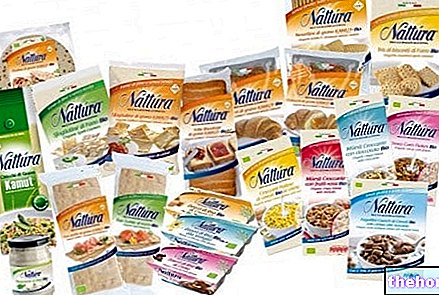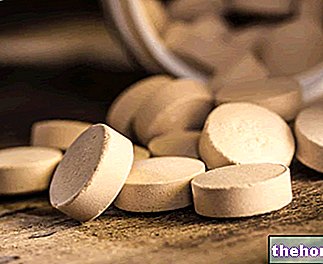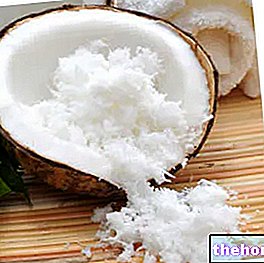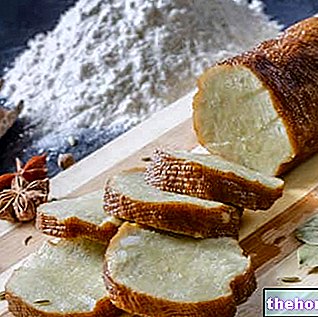Generality
The omelette is NOT the omelette ... even if it is filled and folded in on itself!
The omelette is a dish based on fresh whole eggs, deprived of the shell and beaten, then cooked in a pan or in the oven. It is a fairly common dish, well known to most western and eastern populations; it stands out for its taste and ease of preparation, even if the differences between a good omelette and a "normal" omelette are evident (both on the organoleptic and gustatory and on the nutritional level).

The omelette can be prepared with any type of unfertilized egg; the most common is with that of hen, but there is no lack of omelettes with quail, duck, goose, turkey, guinea fowl and even ostrich eggs. The simple one does not require the addition of other ingredients, apart from salt (however not necessary) and a drizzle of oil or a knob of butter for cooking; at the same time, the omelette can be enriched with numerous ingredients of animal or vegetable origin. Among the enriched omelettes we distinguish: omelettes that integrate part of the side dish (with vegetables, mushrooms or legumes) and those added in milk and / or derivatives, meats (preserved or not) or fish.
Another feature that can distinguish an omelette is the cooking method; two basic preparation techniques are known: in the pan and in the oven. Comparing them, the difference is quite evident; the omelette in a pan is generally circular, rather thin and it is used for the formulation of quick meals; on the contrary, cooking in the oven is aimed at preparing thick omelettes, which require lower cooking temperatures for a longer period of time.
Practically:
- Cooking in a pan (with a thin base) is done in a very hot pan, adding a veil of beaten eggs which, as soon as they thicken, will form a disk to be "overturned" (or skipped), quickly finishing cooking. NB: If the omelette cooks too quickly in contact with the pan without thickening enough in the upper part, you can modify your technique in two ways: 1. Cook a smaller quantity of beaten egg at a time, perhaps making 2 omelettes in a pan with the same compound; 2. Lower the intensity of the fire and use a lid (with the risk that the omelette will swell).
- The cooking in the oven, on the other hand, is carried out in a plate with a high, cold edge, in which a greater quantity of beaten eggs must be poured (a few centimeters, up to 1/3 or half of the total height). omelette should NEVER be turned and the cooking must always be well calibrated (tendentially sweet and prolonged). NB: If the omelette in the oven is NOT cooked sufficiently in the heart of the food (and above or below it is also too colored), it is likely that you have exceeded with the temperature; in a second attempt, it may be useful to completely cover the plate with aluminum foil. The temperature at the time of introduction can be variable. If you are planning a thin omelette, it is likely that with the oven hot and high cooking temperatures the preparation will be successful anyway; on the contrary, if you want to obtain a thick omelette , I highly recommend baking cold and setting no more than 180 ° C.
The consistency of the omelette is also influenced by some variables in its preparation. To obtain a thin omelette, it is always necessary: beat the eggs a little, DO NOT use the lid while cooking, use high temperatures and DO NOT add milk to the mixture. On the contrary, to obtain a softer omelette it is advisable to beat the eggs for a long time (almost until they are whipped), cover the pan or the baking tray, take advantage of temperatures just sufficient for cooking and integrate the mixture with whole milk, to an extent of approx. 1/3 the quantity of beaten eggs (even if this further prolongs the cooking).
The less caloric omelettes are prepared without adding other ingredients or, possibly, by integrating the beaten eggs only with vegetables or mushrooms (raw or already cooked). They are very popular recipes: omelette with stewed onion, omelette with sautéed mushrooms, omelette with asparagus, omelette with tomato, omelette with courgettes, omelette with peppers, omelette with broad beans or with peas or with beans, etc. The more energetic omelettes, on the other hand, almost always contain: grated aged cheese, hard cheeses cut into cubes , preserved and browned meats (crumbled sausage, bacon cubes, cured meats, sausage strips, etc.), cooked seafood, etc. It is not uncommon for a simple omelette to be integrated at the end of cooking, directly on the plate with sliced salami (raw and cooked ham, mortadella, coppa, fresh cheeses, slices, etc.) Some like to season the simple omelette with lemon juice.
Smart omelette with snow egg whites
Problems with playing the video? Reload the video from youtube.
- Go to the Video Page
- Go to the Video Recipes Section
- Watch the video on youtube
Recipe for a simple, thin, pan-fried omelette:
Ingrediants: 2 medium chicken eggs, 1 teaspoon of extra virgin olive oil (5g), salt and pepper to taste, a slice of lemon.
Tools: a container with a high edge to beat the eggs, a fork to beat the eggs, a non-stick pan, a spatula.
Method:
- break the eggs in the container with a high edge without leaving shell residues; salt and pepper to taste;
- beat the eggs with a fork WITHOUT reaching the complete homogeneity of the mixture (a slight separation between egg white and yolk must still be seen);
- heat the already greased pan over a high flame; without the oil burning, pour the mixture of beaten, salted and peppered eggs into the pan, halve the flame and wait for everything to coagulate on the surface (the omelette in the pan must NEVER be presented with too evident browning!); DO NOT TOUCH THE COMPOUND if not at the edges, with the help of a spatula, to separate them from the pan;
- skip or spin the puck; cook for another 30 "" and serve (to taste) with a squeeze of lemon juice.

Nutritional values (per 100 g of edible portion)
NB: some (especially for dietary reasons) like to consume omelettes made up of egg whites only, but it is a totally different food that requires a "broad description to be placed in a separate article.
Nutritional characteristics
The omelette is NOT a preparation with eggs among the most digestible; it is well cooked, which is why the protein structure, after an initial denaturation, tends to restore the ball of the tertiary (therefore quaternary) structure. Furthermore, inexperienced cooks tend to prolong the heat treatment excessively to ensure a sufficient level of cooking; nothing more incorrect.
As anticipated, the omelette (especially the one in the pan) must NEVER have areas of excessive browning; this is justifiable for 2 reasons:
1. the golden area is an indicator of negative molecular alterations of the nutrients;
2. the golden area is an indicator of over or over intense cooking.
The result of over-cooking is a less digestible food, poorer in nutrients and rich in potentially harmful substances.
A final recommendation concerns the quantities of fat used for cooking: I remind readers that, with good equipment and a little practice, it would be sufficient to dirty the pan "with a very thin thread" of oil (obviously before heating it) and, with the omelette being cooked already well coagulated, toss it without even touching it.
The average digestibility of a two-egg omelette is about 180 ", although I personally believe that a simple and WELL-executed preparation can also earn up to almost 30% of the indicated time.
The nutritional contribution of the omelette is the same as that of the raw egg (with a few more grams of lipids deriving from the oil or butter for the pan) ... except for some changes related to the heat treatment that affect the thermolabile vitamins (such as, for example, thiamine - vitamin B1), vitamin H (which acquires bioavailability) and the structure of proteins. The average portion of omelette fluctuates between 100 and 150g, to be consumed NOT more than once or twice a week (to because of the high cholesterol intake in the yolk). Naturally, the nutritional values can be altered by adding other ingredients to the basic recipe; for example, cheeses and cured meats significantly increase the lipid and energy intake of the omelette, while the addition of vegetables increases the intake of fiber making the food more digestible and satiating.




























